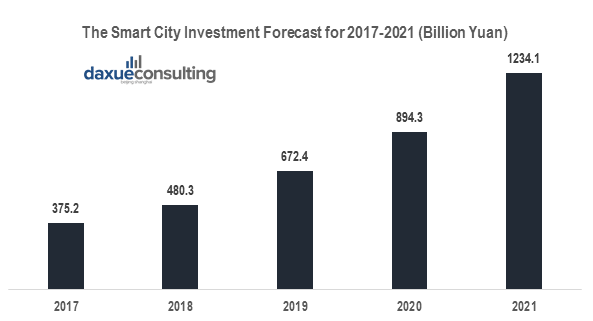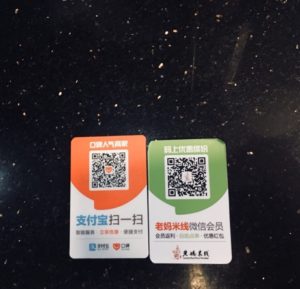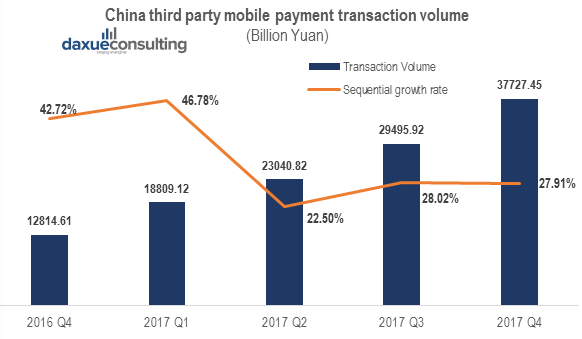China, since 2013, has been working on implementing the concept of Smart Cities and creating ecosystems aiming at position the domestic high-tech industries as world leaders. Smart city is using advanced digital solutions and IoT (Internet of Things) to implement data-driven urban strategies. For the Chinese authorities, this strong focus and incentives on the development of smart city in China has 2 key objectives:
- Allow the emergence of high-tech driven domestic markets and companies
- Make the targeted city more energy-efficient and livable, and therefore answer numerous key challenges posed by the urbanization in China (traffic, energy-supply, air quality, etc).
The concept of smart city has been introduced by IBM in 2010. Almost every country in the world are developing their smart cities now, including New York, Boston, Turin, Moscow, Seoul, Shanghai and Buenos Aires. The first version of Smart Cities in China has focused on building the infrastructure, implementing technology and collecting data from users and gaining insights. The evolution of Smart Cities 2.0 has now led the focus on strong digitization of urban equipment, 3Ds, data processing and user-centered designs. This Smart Cities 2.0 evolution has leveraged the joint effort from government and corporations to considerably upgrade and accelerate the smart city development in China.
China has created the foundation for a world-leading smart city development program
China Academy of Information and Communication Technology has released data showing that, until 2016, China had 542 pilot cities under smart city development. The actual number of smart cities in China is 386, containing all the provincial and sub-provincial cities, prefecture-level cities and county-level cities.
74% of prefecture-level cities and 32% of the county-level cities are categorized as Smart Cities in China. Most of the Smart Cities are located near the coastal areas, especially eastern side. The reason behind this geographical difference is the economy. With better economy, the government has more investment funds, and businesses have more access and economic power to create technology advancement. The population in eastern areas is also more confronted to new models of consumption and lifestyle and the market acceptance is therefore higher, including the acceptance for Smart City.

According to Forbes’s World’s Smart Cities ranking report, New York tops the chart, follows by London and Paris. Tokyo ranks at 4th and was the highest-ranking city of Asia, followed by Singapore which ranks at 6th. Shanghai, on the other hand, ranks only 57th in the chart. Indeed, China is still in the early development phase comparing to the West’s Smart Cities, but the government investments are increasing each year and the smart city pilots have outnumbered the West.
Therefore, in spite of lower current performance, China has now reached a leadership role in developing smart cities due to having a more supportive environment, comprehensive digital connections, massive data collections and better user design.
How does China maintain a supportive environment for building Smart City programs
China has a better environment for building smart cities thanks to its
- solid economic growth,
- government policy support and
- advanced technology development.
In terms of economic growth, China has achieved GDP growth of more than 5% for over a decade, while the West has suffered from economy failure including the financial crisis in 2008. Thus, the economic development in the west cannot aid in the vast and rapid development of smart cities. While China, with massive amount of economy growth, has the ability to invest in different areas simultaneously.
Over the years, China has issued several policies to emphasize the importance of building Smart Cities. The Ministry of Housing and Urban-Rural Development has announced China’s first list of pilot Smart Cities in 2013. Later, the government has also released several announcements to oversee the development of Smart cities, including speeding up the implementation, promoting the sustainable development and setting new urbanization plan for 2014-2020. The issue of these policies has testified China’s ambition and determination to implement Smart Cities strategy and work on urbanization programs tackling all the current issues of Chinese top-tier cities. Also, China will increase its investment on Smart City project every year, forecasting number from 375.2 billion yuan in 2017 to 1234.1 billion yuan in 2021.

Also, China has launched multi-dimensional technology development plans including the Internet Plus (互联网+). Internet Plus (互联网+) is a new development category of Smart City 2.0 It imply to integrate Internet-based technology with traditional industries to drive the economy growth into different forms. Industries vary from government to real estate, from finance to entertainment. The government supervises the technology movement and policy implementation from top down and aims to provide more choices for citizens. For the recent 7 years, the number of China’s internet users has been increasing from 0.564 billion in 2012 to 0.727 billion in 2018. With this sizable increase, China has huge potential in fastening the development of Smart Cities.
China’s comprehensive IoT applications connects citizens’ lives
China now has built comprehensive digital ecosystems in the targeted cities and collected massive data from users in every second. The digital constructions in the cities will include the implementation of RFID (Radio Frequency Identification) sensors, complete wireless connectivity, full-scale electronic payments, and cloud-based software services.
With the help of the booming e-commerce and overall smartphone penetration, China’s smart city has been developing faster than ever. The application of RFID sensors is everywhere, from scanning the QR code to enjoy bicycle sharing, taking the subway to making an order by scanning the code provided on the table in a restaurant, from personal usage, business usage to social usage. It is almost inevitable for citizens to scan numerous codes and digitizing their daily activities. While on the other hand, it is not the case in the West, the RFID sensors mainly apply to security system, business supply chain management, technology development studies and so on.

Chinese ecosystems are nurturing and maturing smart wireless applications in urbanized areas
The widespread use and implementation of wireless connectivity is especially significant, including Wireless Local Area Network (WLAN), providing connection to high-speed internet and Bluetooth technology for content sharing and streaming. The state of development of wireless connectivity in China and the West are similar, but the application of this technology varies with huge difference.
For instance, benefiting from the high-speed wireless connectivity and popularity of smartphone usage, China has achieved a full-scale electronic payment system. Apart from using the traditional banking services or cash, people use Alipay, WeChat, Apple pay or online banking system to pay their bills or purchase products.

When you ask a random person on street, there are huge probabilities that he or she will not have any cash or credit cards on hand, since what he or she uses is only a smartphone. According to Analysys.cn, China’s third party mobile payment transaction volume has been increasing to 37727.45 billion yuan in the 2017’s fourth quarter, the sequential growth rate has reached to 27.91%. The huge amount of transaction volume shows the popularity of mobile payment, and the rapid development of smart cities in China.

However, in the West, the mobile payment development is not as advanced as China’s, the transaction volume is smaller and people still mainly use traditional banking system and cash to make day-to-day payments.
Another element significantly involved in the Smart City development is the cloud-based software services. Alibaba recently has teamed up with the city Macau to transform the idea of Smart City by using cloud services. The cloud-based software will be used to collect user data in areas such as healthcare, security, institutional operations, transportations and more. Along with Alibaba, other Chinese business conglomerates have been strategizing to take over the new market by using cloud computing. Huawei and Ping an Insurance launched strategic cooperation agreement in February 2018 to promote resources and complementary advantages integrations. Ping an Insurance can use Huawei’s technology and its cloud system to implement its Smart City application, to install user information and to collect user data. The usage of cloud-based software services is also widely accepting in the West, as for instance Apple provides iCloud platform and services for personal and business usage.
By using these latest technologies, China’s growing IoT software pool collected massive data to depict personal profiles and make prototypes to achieve better user satisfaction.
China aim to achieve collective intelligence by using City-as-a-platform
“City-as-a-platform” is a new partnership platform provided to citizens, business and government to share information. Using the data collected by digital applications, the new Smart City has put citizens in the center of everything. It is said to have led China to make significant progress in smart transportation, smart healthcare and smart governance.
For example, in smart transportation, users have various options for methods of transportation and payment methods. The key players include Didi (滴滴出行), Shengzhou (神舟专车) for cars, OFO and Mobike for shared-bikes and Metro services, bus services for public transportation. Citizens can choose their own preferences and create own partnerships with businesses and governments. By tracking the transportation traffic every day, the transportation department can allocate their resources, arrange subway and bus shifts according to traffic. People will have more subway shifts when there are massive traffic jams on the ground, in the night, the shifts can be reduced when there are less people using the public transportation. This smart transportation can benefit not only citizens but also the government, citizens can have more time and less loss in experiencing traffic jams, the government can also have an efficient transportation system and a more stable city environment.
Smart city also includes smart healthcare, as appointments can be online, or overall with less and less human services. Doctors can access patient profile and prescript medications information on the hospital cloud system. Patients can go straight to the pharmacy to get his medicine, which has already been prepared at the moment when doctor prescript medications. In the end, the patients can make payments using the card, Alipay or WeChat pay. This smart healthcare also provides new ways for doctors to engage with patients through websites. A Beijing patient can get treatment from a Shanghai doctor in one minute online. Also, the enormous patient profiles in the cloud system can be a quicker way for doctors to access data to cross-reference diseases, thus helping medical development.
China’s Smart City market is booming with the constituent help from government, businesses and citizens
Smart City has been only a concept in the earlier 2000s, but with the help of advancing technology, the concept began to be transferred into reality. China, over the years, has built a supportive environment for the development of the Smart City by using the Top-down approach. With the government’s leading, businesses and citizens joined the evolution to offer constituent effort. Now, China has maintained a comprehensive digital construction and collected massive data from the users. Those data in turn has given users better Smart City experience and more choices. China now has outnumbered the rest of the world in smart cities pilots, it will continue using the “city-as-a-platform” to shift the role of the government from doing by itself to enable citizens participate in making decisions, to align business with smart city goals to innovate and create more IoT software to increase the market size, to offer citizens opportunities as designers of the future.
Daxue Consulting can provide data report and strategic positioning for international brands aiming at integrating solution in Chinese smart ecosystems
Daxue Consulting has developed an extensive experience and network among the Chinese smart city ecosystems and related industries, including projects in data processing systems, connectivity offer monetization, and smart lighting and urbanization models. Our team can answer your need of information and leverage our knowledge of the market to provide key strategic insights on your implementation in China. Contact us for more information and set up a call with one of our senior research directors.





